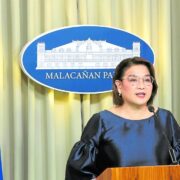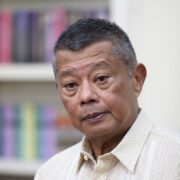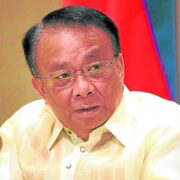Indigenous peoples and just energy transition

A just and fair transition to a real net-zero future without carbon emissions should be at the center of policymaking in Southeast Asia. If the region seeks to emerge as a trailblazer in this equitable transition that also prioritizes people’s rights, it has to take into account their rights and those of other marginalized groups.
It is vital to ensure that indigenous peoples are not only part of the conversation about what this transition means in practice, but they have to be at the center of this complex shift necessary to tackle the climate crisis and its impacts.
Over half of “transition minerals” are on indigenous lands, and a large percentage of renewable energy potential is located on marginalized rural communities. A 2022 research published in Nature analyzed over 5,000 transition mineral projects, and found that 54 percent were located on or near the lands of indigenous peoples. Another study found 80 percent of 700 mining projects for transition minerals were located near similar areas.
When transition minerals such as bauxite and nickel are being mined, or a hydropower dam and transmission lines constructed, often with financing from bilateral and multilateral banks, it is a common occurrence that indigenous peoples’ rights are violated.
A reaction to these transgressions is evolving, with ongoing efforts to advance the role of indigenous peoples in leading such transition. In September last year, the Right Energy Partnership with Indigenous Peoples (REP), worked with the Asia Indigenous Peoples Network on Extractive Industries and Energy and the Asian Indigenous Women’s Network, in organizing a regional conference in Bangkok.
Attended by 30 indigenous women and youth representatives from nine countries across Asia, the conference came out with a declaration demanding respect for their rights in the just and fair energy transition. It is a passionate call for governments, private businesses, and investors to genuinely embrace partnership with women and youth from indigenous communities, the ancestral guardians of the rich biodiversity of the region.
But the conference declaration is not only about indigenous peoples’ rights as it envisions them leading a different model of renewable and clean energy production. It calls for the national, regional, and local governments, together with the international community, to support indigenous-led solutions through “investments in community-owned, indigenous-led renewable energy initiatives that respect self-determined development.”
The REP recently launched a major report that highlights how it is possible to advance indigenous-led energy systems, as such “initiatives have been implemented by indigenous peoples in Malaysia, Philippines, Cambodia, Thailand, Myanmar, and Nepal,” Robeliza Halip, the interim executive director of the REP, said in an email interview. Halip, who belongs to the indigenous Kalanguya and Kankanaey peoples in the Philippines, is among the key persons behind the conference and the declaration.
“These initiatives include the establishment of mini-hydro systems to support not only the electricity needs of the community (including) their schools and clinics, solar dryers for the drying of their non-timber forest products sold in the market, and solar water pumps to support their water supply, among others,” she said.
While small scale in nature, these initiatives are servicing off-grid, far-flung communities and are supporting the community not only on access to energy but their economic needs and advocacy work, particularly in protecting their lands and resources from destructive development projects, Halip added.
Engaging in a meaningful way with indigenous peoples for energy transition is not only the smartest thing to do in Southeast Asia because of their knowledge and expertise; it is also a moral imperative.
A just transition, as we know, is not only about hydropower, wind- and solar-powered production. It is also about obtaining the minerals to turbocharge it.
“In many instances, the mining of critical minerals such as in the Philippines, Malaysia, and Indonesia is undertaken either without (these peoples’) FPIC or the process to obtain their consent manipulated, resulting in irreparable damages to the collective way of life of the affected indigenous communities,” said Halip.
She added: “The impositions forced on us brought about loss of livelihood for many indigenous communities, resulting in the youth having to stop their education to support their families through daily wage labor jobs, most often outside their communities.”
Will governments and the business communities admit their mistakes and bring about changes in their relationships with indigenous people? The Jakarta Post/Asia News Network
—————–
Prabindra Shakya is the convenor of Asia Indigenous Peoples Network on Extractive Industries and Energy. Simone Galimberti is a freelance columnist focusing on regional integration in Southeast Asia, human rights, and development.
—————–
The Philippine Daily Inquirer is a member of the Asia News Network, an alliance of 22 media titles in the region.

















